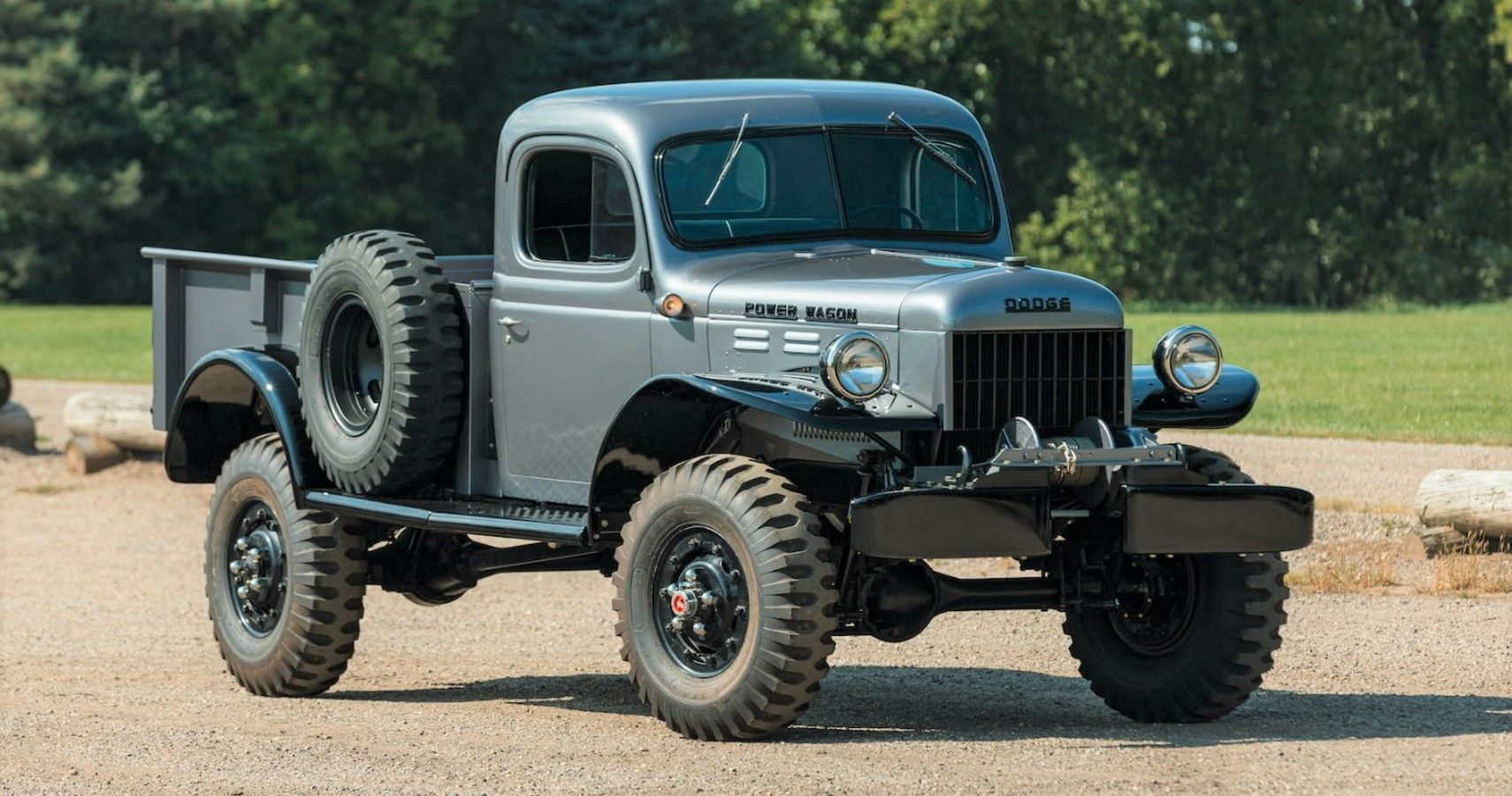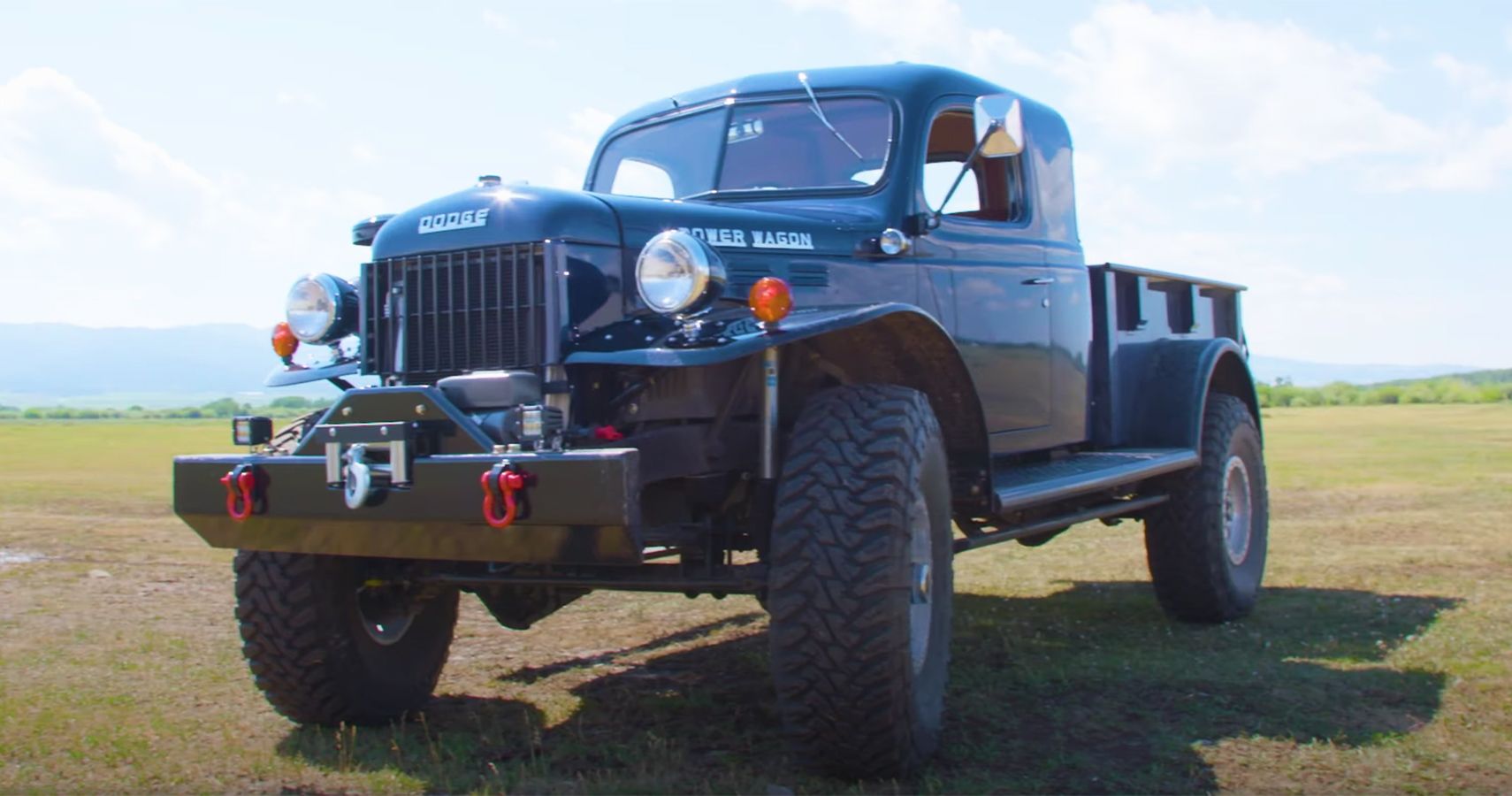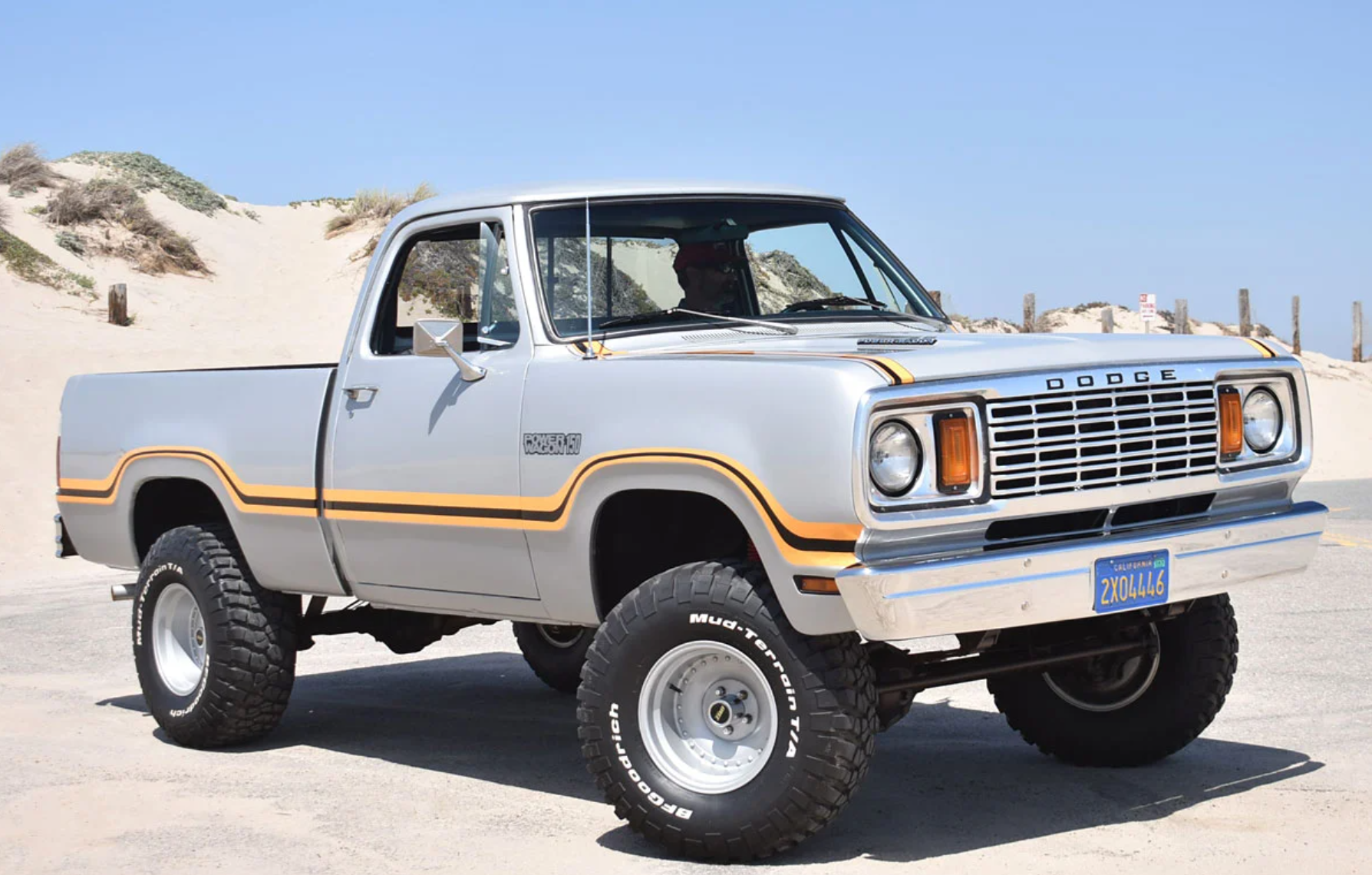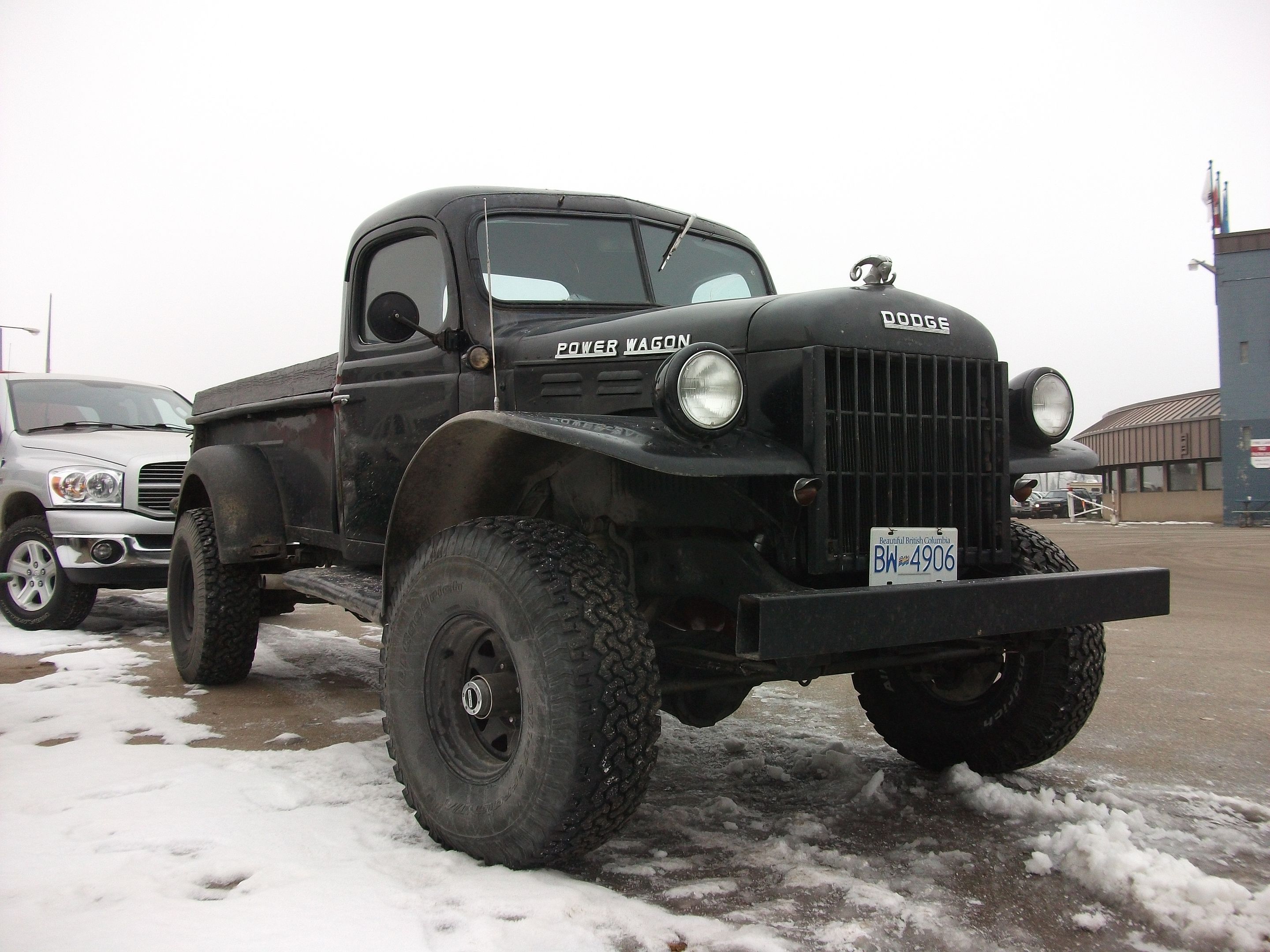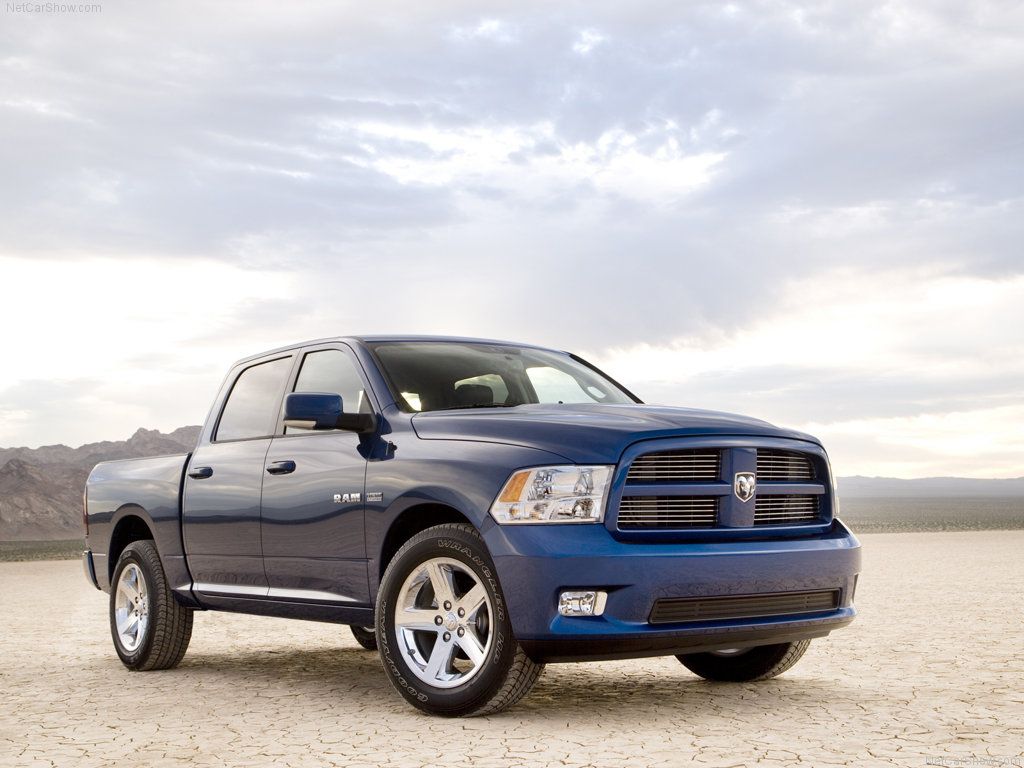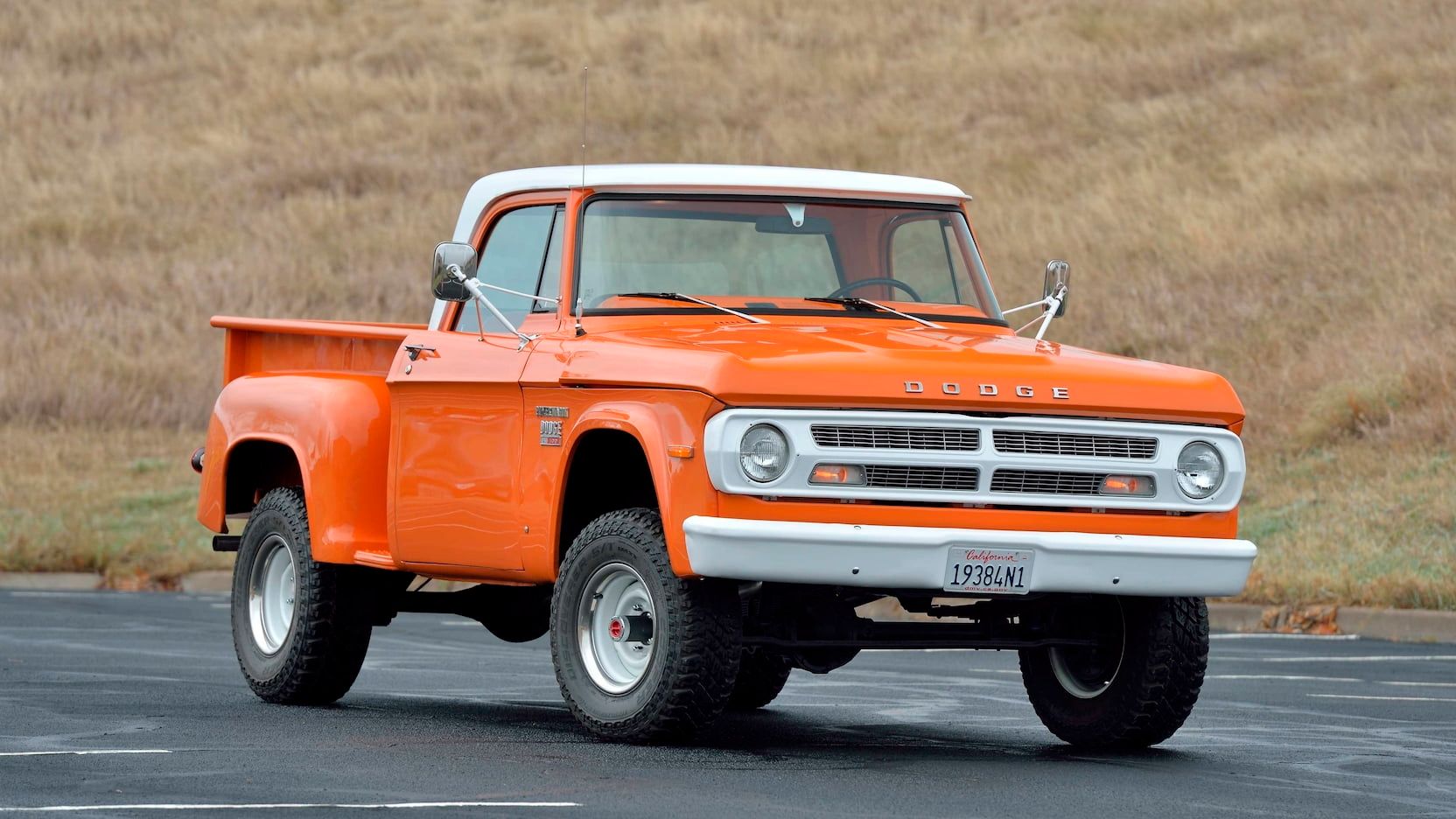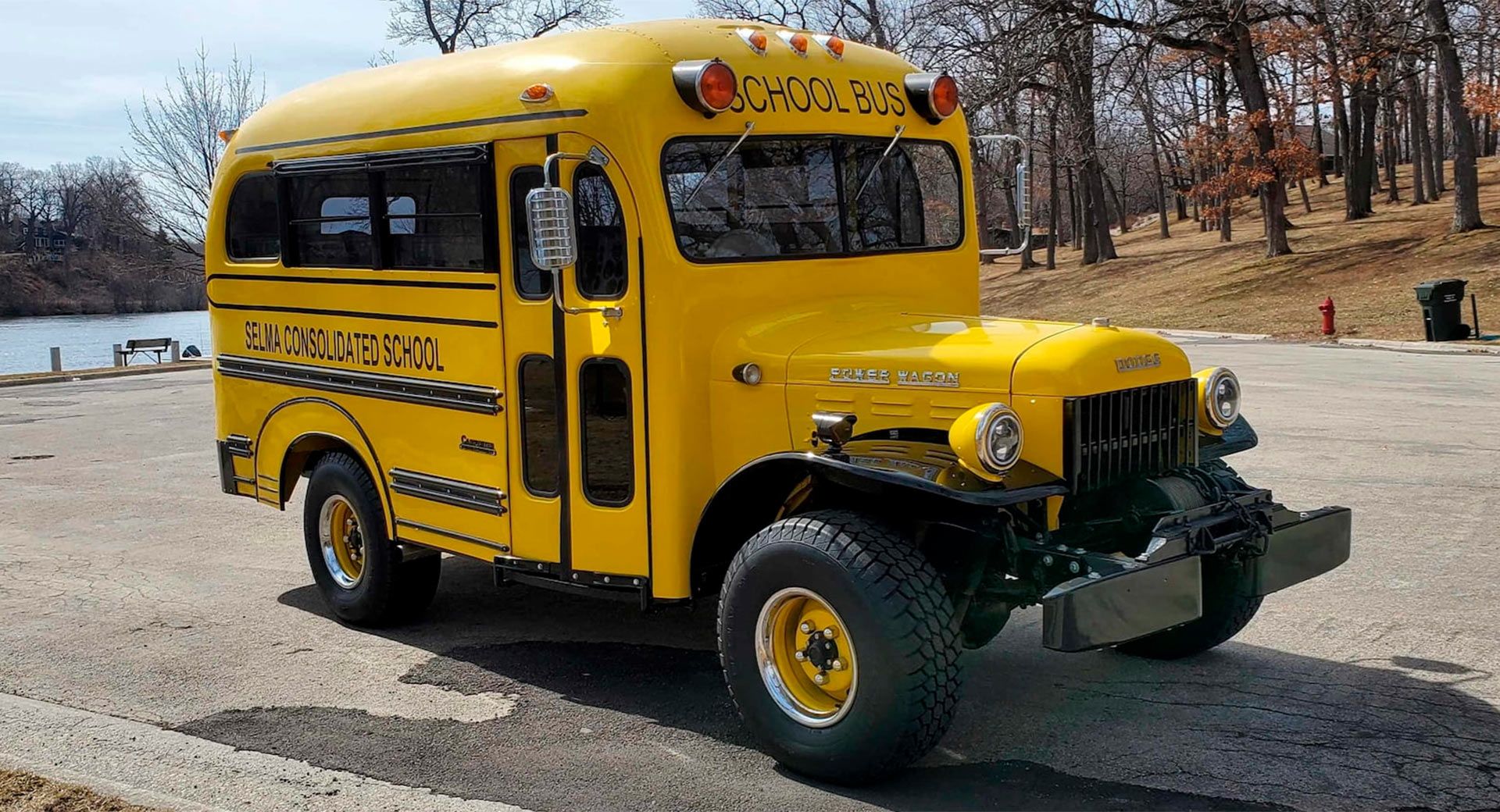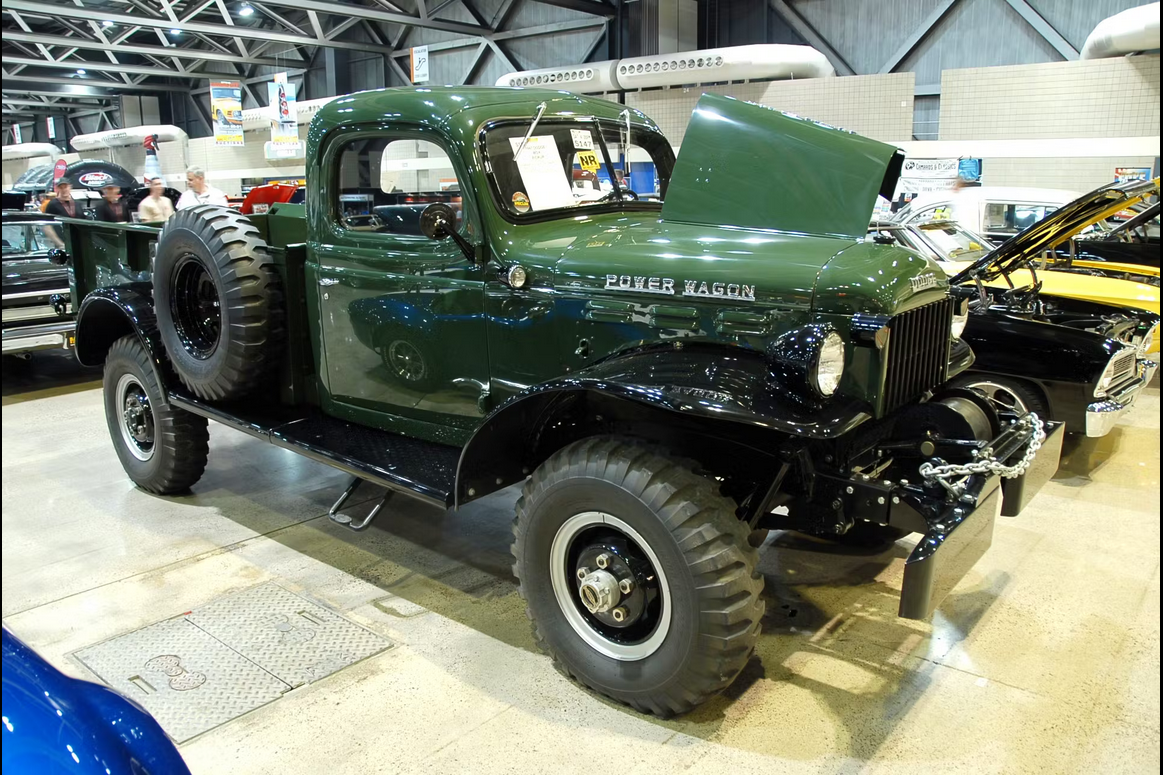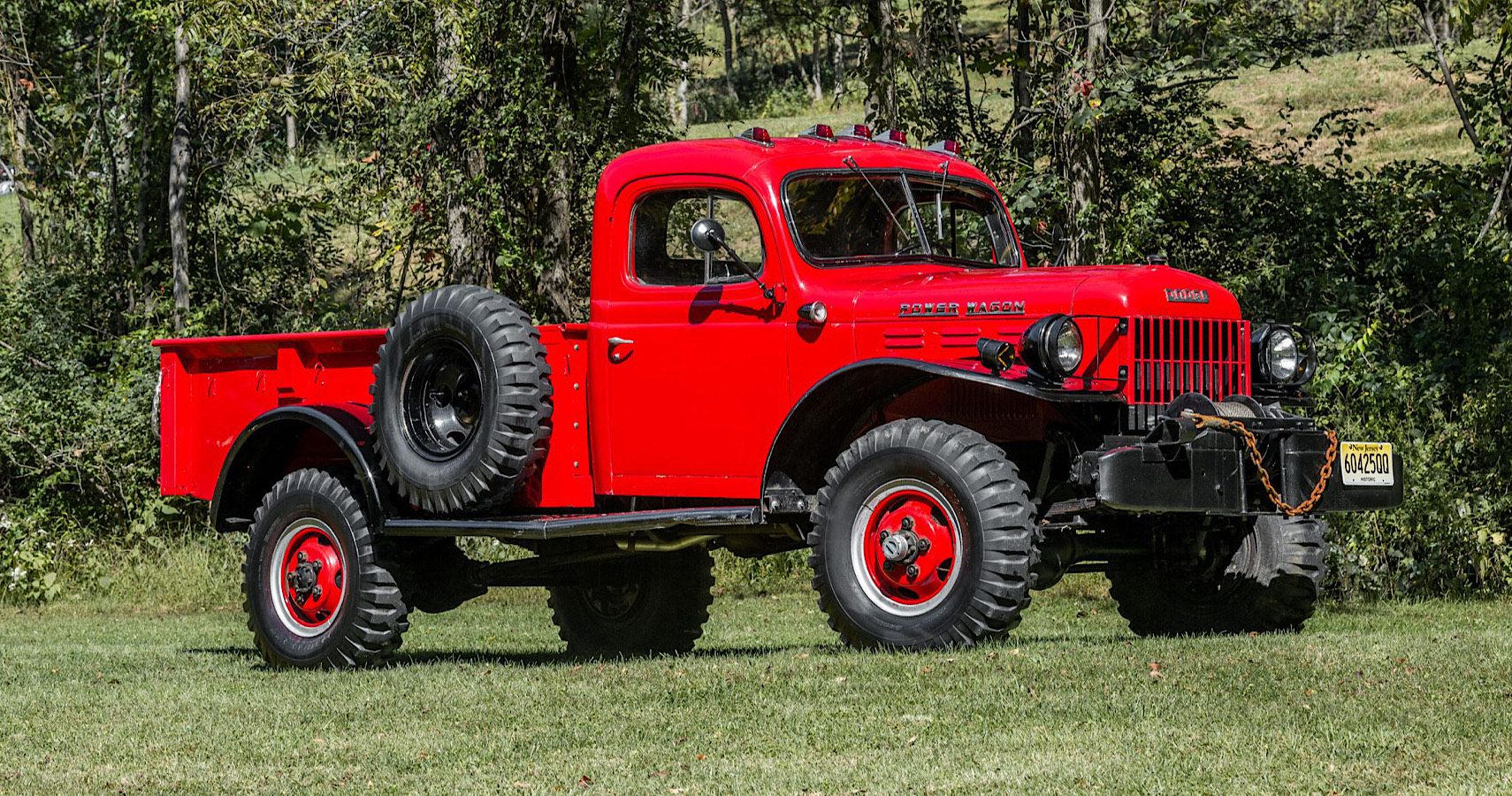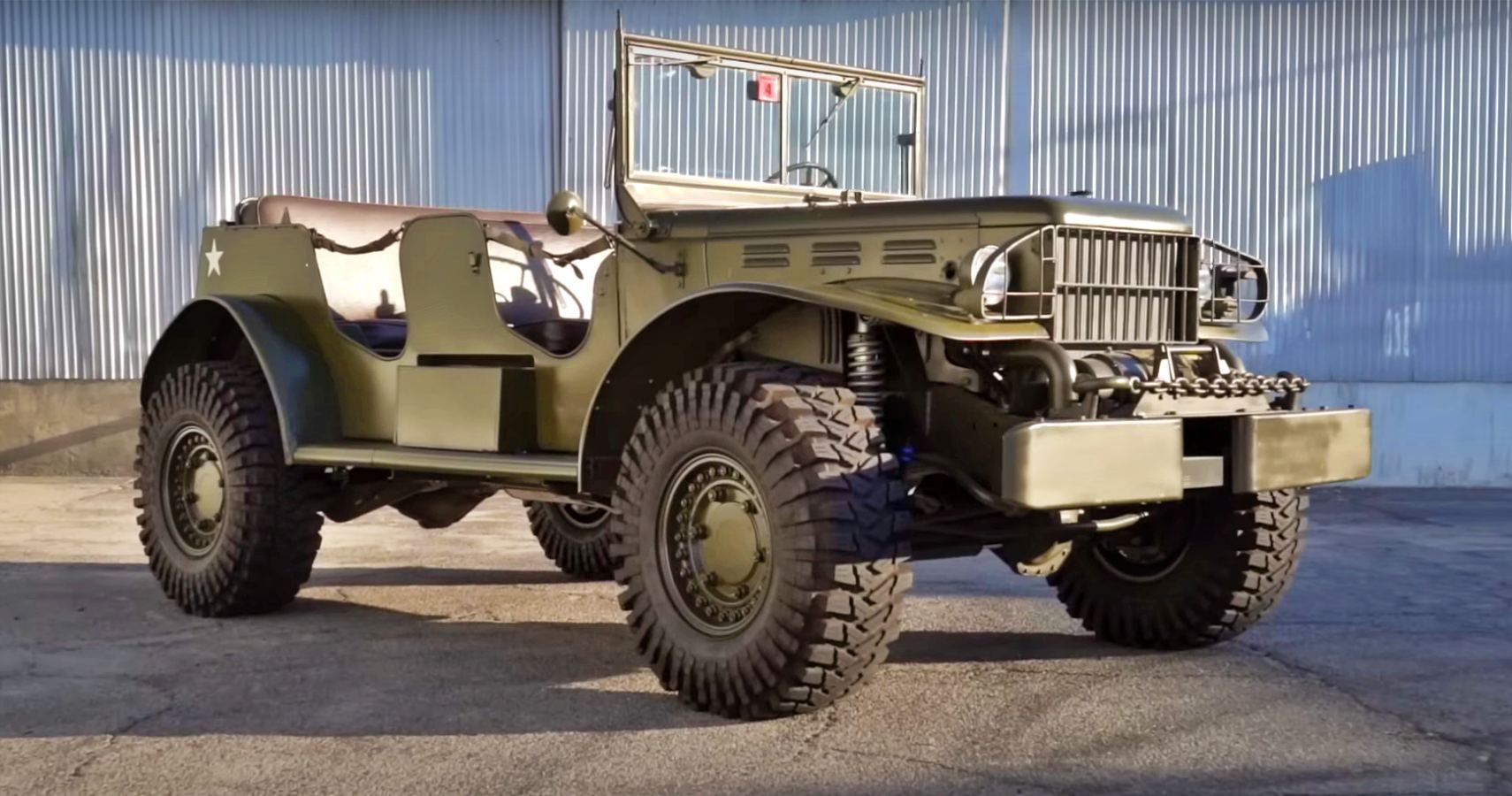Before the muscle car era of the '60s, America was still recovering from the struggles of World War 2. During these years, the average American didn’t care for ‘fun’ vehicles. They bought pickup trucks because they had work to do, and most jobs needed a truck to get stuff done. Nowadays, pickups have inevitably become intertwined with American culture. The seed for the pickup truck culture was sown in the time of World War II, when the United States military needed a heavy-duty military truck.
Such a truck needed to be versatile, something that could carry ammunition, weapons, soldiers, yet also serve as a patrolling and scouting vehicle. Multi-utility military trucks were expensive to build, but many manufacturers tried their best to make something usable. Around this time, Dodge designed the Dodge Power Wagon, a versatile military truck that the army could utilize for all their needs.
After the Power Wagon had been in production for a while, Dodge realized that there might be demand for such a heavy-duty four-wheel drive truck in the civilian market as well, as a 4WD improves traction in harsh driving conditions that make control difficult. This is why they designed the Power Wagon for civilian utility. The first-generation Power Wagon quickly became a favorite among farmers, ranchers, and other rural workers who needed a reliable vehicle to navigate their challenging work environments. During that era, trucks quickly became the go-to vehicle for most American households, for their tough look and instrumental utility. Eventually, trucks became, to Americans, what drifting was to the Japanese. As such, there are many trucks that have made a name for themselves in the American market, and here are 10 reasons why the Dodge Power Wagon is one such iconic pickup truck.
10 The Dodge Power Wagon Was The First 4x4 For The Masses
The Dodge Power Wagon was introduced as the first 4x4 truck available for civilian usage. The reasoning was quite simple. It'd make perfect sense to use a four-wheel-drive that has great off-road abilities in a time when the country was recovering from war. As demand for goods would be high, and everyone would wish for a vehicle that can be utilized for work purposes at farms or other jobs, as well as a daily ride, the Power Wagon would be the answer to every one of these questions. The Dodge Power Wagon was durable like a military truck, but had the comfort and convenience of a civilian vehicle. This is exactly why it held a special place in the hearts of truck lovers, and still does.
9 The Dodge Power Wagon Remained A Premium Hunk
Throughout America's rich automotive market history, few vehicles have been able to maintain their premium status. The Dodge Power Wagon is a revered icon of the American automobile industry, and thus, evokes memories of a bygone era when trucks were built to endure the toughest of conditions. Hence, it is still considered a premium vehicle, despite being more of a classic truck from the muscle truck era.
The Dodge Power Wagon entered the market at a cost price of around $1,627. The price tag was pretty high for the average American household of the time. But Dodge had provided truckers with a long list of premium features in this truck. A four-wheel-drive system, a winch, and also a power take-off unit, these were all cutting-edge technologies at the time and nothing to scoff at. Perhaps what contributed to the vehicle's cost was its high instrumental utility. Nevertheless, people bought it, as the investment usually paid off in the long run, with the truck making them back the money they put into it.
In the '70s, as the world began to learn about the various harmful effects of pollution on climate change, the pollution regulations were altered in support of more fuel-efficient and compact vehicles. This was also the era when the muscle car era was on its last legs, and road safety laws were changing. Manufacturers observed a surge in the popularity of compact pickup trucks during this time, smaller, more fuel-efficient, and less expensive. The Power Wagon was declining in demand, which drove down the cost of the vehicle, causing Dodge to offer more basic models with fewer features at a cheaper price, to improve the sales. Thus, the Dodge Power Wagon became a somewhat more affordable but premium vehicle for Americans throughout the latter half of the twentieth century.
8 The Dodge Power Wagon Had Longevity
Throughout the years, the sturdy Power Wagon has proven itself to be a symbol of durability. Many drivers that drive this masterpiece boast of its longevity and reliability. The Dodge Power Wagon had various mechanical upgrades, and it cemented itself as a durable and reliable vehicle that survived the test of time.
However, rust is a bane to all things metal, a corrosive force that can eat away at even the hardiest of materials. Surely, the Power Wagon could not survive this insidious foe? If those are the thoughts in one's mind, they are wrong. The Dodge Power Wagon's robust design made it impervious to the attack of rust, allowing it to weather the elements and emerge unblemished. The metal was thick and there were no gaps or crevices through which water could leak into the more vulnerable parts. Of course, the thick sheet of metal made the vehicle as heavy as anything, but that was a small price to pay for the trucker that wanted a durable truck. Whether you are traversing the dusty plains of the American Southwest or the salty roads of coastal Maine, the Power Wagon will remain steadfast and true, impervious to the scourge of rust and decay.
7 The Dodge Power Wagon's Four Major Generations
While the original Power Wagon was primarily designed for utilitarian purposes, the second generation, which arrived in the early 1950s, boasted a sleeker and more refined design for drivers who wanted a vehicle that was both stylish and functional. The new Power Wagon had a much better suspension system along with an improved, powerful engine.
The late 1970s were a rather strange time for car manufacturers. Every driver was demanding a fuel-efficient vehicle. The third generation of the Dodge Power Wagon, thus emerged on the scene, designed with an eye towards fuel efficiency, without sacrificing any of its durability. Dodge made a more aerodynamic design, using lighter materials. This variant was fitted with a smaller engine, delivering as much power as its predecessors, while consuming less fuel. This was a major step forward for the trucking industry, as more and more trucks were getting fitted with powerful but small engines that were highly efficient. The fourth and most recent generation of the Dodge Power Wagon arrived in 2017 and combined cutting-edge technology, resulting in a vehicle that is both powerful and sophisticated. The Power Wagon moniker was retired in the '80s, but saw a revival in 2005.
6 The Ram Re-Branding Made Waves
As the winds of change swept across the automotive industry in the latter half of the 20th century, the parent company of the Dodge brand, the Chrysler Corporation, began to restructure its operations to adapt to the shifting market dynamics. In the early 1980s, Chrysler (now Stellantis) established a new division dedicated solely to the production of trucks, which it named the Dodge Truck Division.
Around this time, the decision was made to re-brand the venerable Power Wagon line as the Ram. This strategically consolidated the brand's identity and established a clear hierarchy within the product line. Dodge created a separate sub-brand within the Dodge Truck Division to create a more focused marketing and sales strategy, which would enable it to better compete with rivals such as Ford and General Motors.
5 The Dodge Power Wagon Could Be Used As A Daily Driver
In the 1950s, the trucks were built with civilian sheet metal, coming in a half-ton version, making the Dodge Power Wagon's rebranded variants very appealing to a broader market. The whole purpose of creating a civilian 4WD heavy-duty truck is to make it capable of a variety of tasks, one of those tasks being running as a daily ride. The Power Wagon's re-branding allowed Dodge to create variants focused around this exact philosophy.
Its off-road capabilities made it an ideal choice for those residing in regions with harsh terrain and inclement weather conditions. Its ample cargo space and towing capacity meant that no questions could be raised about its practicality for truckers who require a vehicle for work or leisure purposes.
4 The Dodge Power Wagon Could Be Used As A Bus Or Cab
One of the most intriguing features of the Dodge Power Wagon was its versatility. This mighty machine could be used not only as a pickup truck or a military vehicle, but also as a bus or a cab! Such was its strength and durability that it could easily transport many people over rough terrain. In rural regions where district schools had fewer students, the variants of Power Wagon were employed as buses, and in some rural hospitals, as ambulances.
3 The Dodge Power Wagon Had Many Essential Pickup Features
When the nation was recovering from the economic and social suffering due to the war, everyone was looking for a vehicle that could be practically usable in their jobs. The Power Wagon was exactly that, as everyone could use it – for logistics, farming, pickups, by utility companies and municipalities, also advertised as a mobile power unit, or as a tow truck. All Power Wagon variants boast prodigious hauling capacity, thanks to their spacious cargo beds and powerful V8 engines. Whether one is transporting goods or equipment, these trusty steeds will not disappoint. And should one find oneself in need of additional power, they shall fear not, for the Power Wagon can be equipped with a winch capable of exerting formidable force.
2 The Dodge Power Wagon Was A Top Competitor
Unlike many of its rivals, the Dodge Power Wagon was not merely a one-trick pony, but a vehicle that could adapt to various challenges. This was proven time and again as the vehicle gained popularity in a bunch of different industries despite originally being shipped as a machine intended simply as a pickup or a hauling truck for logistics companies. The Ford F-Series, the Chevrolet 3100, and the GMC Series 100 were all respectable rivals to the Dodge Power Wagon and its re-branded descendants and variants. These competitors were certainly popular and respectable, with the Ford F-Series becoming one of the best-selling trucks of the modern era, but they lacked in many important aspects and could not match the Power Wagon when it came to its versatile nature and off-road prowess.
Take the Ford F-Series as an example. Ford took their sweet time to come up with their own four-wheel drive variant, and by the time they did so, it was already 1959, when the muscle car era was about to go full throttle. Even then, their 4WD was not nearly as robust as the Power Wagon. The Chevrolet 3100 and GMC Series 100 ended up getting outclassed in terms of off-road capabilities as well, perhaps due to their lower ground clearance and less powerful engines.
1 The Dodge Power Wagon Was Built As An American WWII Machine
The original Dodge Power Wagon is a vehicle that has long captured the imagination of automobile enthusiasts and military historians alike. Built as an American World War II vehicle to meet the needs of the United States Army during World War II, when the vehicle was released to the civilian market, it soon gained a reputation as a workhorse that could handle any job thrown its way. This showed the ingenuity and resilience of the American spirit.
These are the various reasons the Dodge Power Wagon remains an icon of American automotive history. Every trucker has heard its name and shown it respect, and its rich legacy lives on in the hearts of collectors and enthusiasts, who recognize it as a symbol of American ingenuity and determination. It is a vehicle that embodies the spirit of a nation that refuses to back down in the face of adversity, and one that continues to inspire us to this day.

